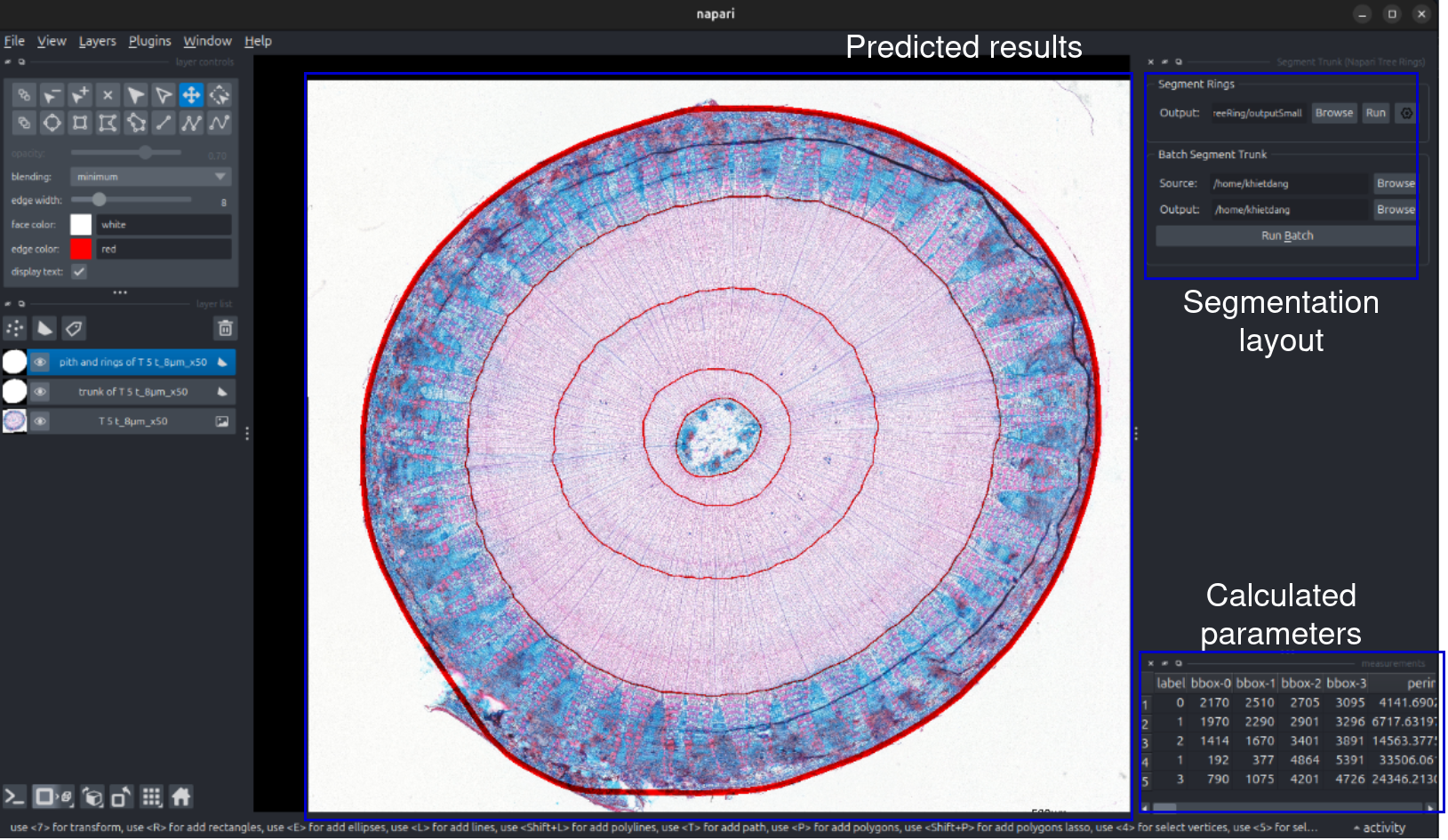Quick start: A user guide
1. Introduction
“Tree Ring Analyzer” is a Python module allowing to segment tree rings from 2D stained microscopic cross-sectional tree images.
“Napari Tree Rings” is a Napari plugin in case you would need a graphical interface.
The segmentation allows user to segment bark, pith, and annual rings of xylem cells.
- The measures (exported in CSV files by running batch) include:
bbox
perimeter
area
area_convex
axis_major_length
axis_minor_length
eccentricity
orientation
area_growth
From the GUI (Napari), a batch mode is available allowing you to run the whole workflow on an entire folder.

2. Install the plugin
We strongly recommend to use conda or any other virtual environment manager instead of installing Napari and tree-ring-analyzer in your system’s Python.
Napari is only required if you want to use tree-ring-analyzer with a graphical interface.
Napari is not part of tree-ring-analyzer’s dependencies, so you will have to install it separately.
Each of the commands below is supposed to be run after you activated your virtual environment.
If the installation is successful, you will see the plugin in Napari in the top bar menu: Plugins > Segment Trunk (Napari Tree Rings).
A. Development versions
Method |
Instructions |
|---|---|
pip |
|
GitHub |
|
From an archive |
|
B. Stable versions
Method |
Instructions |
|---|---|
pip |
Activate your conda environment, and type |
NapariHub |
Go in the plugins menu of Napari and search for “Napari Tree Rings” |
3. Notes
The plugin provides detailed output, so it’s recommended to monitor the terminal if you want detailed information about its actions.
If a crash occurs, please create an issue and include the relevant image(s) and a copy of your terminal for further investigation.
Napari currently supports only open file formats, so make sure to convert your images to TIF format before using them with Napari.